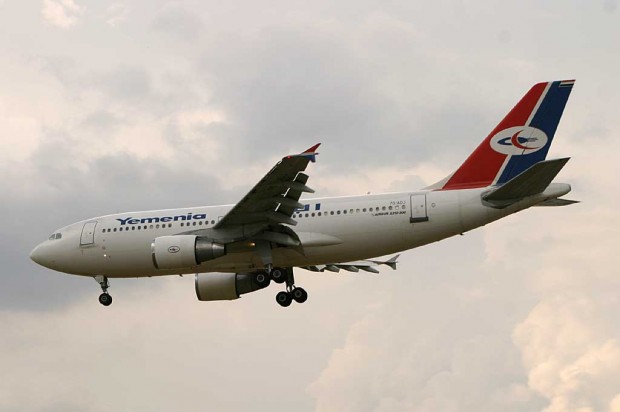
The Yemenia flight is the fifth passenger airline accident this year. In addition to the Air France crash, there was the Colgan Air crash in Buffalo, an accident in Brazil, and another in the Netherlands.
The Yemenia plane(the picture is of the exact aircraft in question, courtesy of NYCAviation.com)that crashed while was built in 1990. It was the ninth total loss of an A310 and eighth fatal accident for that plane since it entered service in 1983. Forty-one airlines operate 214 Airbus 310s.
How could such a crash happen? Well, in the case of Yemenia, there were several developments. The airline had been banned at the end of February from servicing EU-registered jets after failing audit inspections. The country of Yemen denied any safety problems with its flag carrier and said its aircraft were always thoroughly maintained.
The plane involved with the crash was registered in Yemen, and thus not subject to such a ban. Yemen’s transport minister said the crashed A310 underwent a thorough inspection in May under Airbus supervision. The plane was leased to Yemenia by the International Lease Finance Corporation, the world’s largest leasing firm, which is owned by AIG, which after the bailout is now 80% owned by the United States government.
However, despite the insistence of the transport minister, French officials insist they had determined in 2007 that the plane was faulty and that the plane has not returned to France since. The honorary consul in Marseille for the Comoros Islands referred to Yemenia’s planes as “flying cattle trucks.” A Comoran commented that some people stand on the aircraft all the way. Others have complained for years. Yemenia was set to be interviewed soon by the EU committee that can ban airlines from their airspace.
For those who try to link this with the Air France flight, experts insist there is no possible connection. The causes theorized involving the Airbus Fly-By-Wire system and the pitot tubes have no specific analog on the Airbus 310, an older aircraft which has no fly-by-wire.
Although there were conflicting reports earlier, there was a lone survivor, 14 year-old Bakari Baya, a Marseille resident who was traveling with her mother. Bakari was apparently conscious. We will have more stories on the situation as it develops, including how one child miraculously survived.
Related articles by Zemanta
- ‘Miracle’ child found alive in ocean after jet crash (cnn.com)
- Plane Crashes in the Comoros Islands (flightwisdom.com)
- Girl survives as jet carrying 153 crashes (guardian.co.uk)
![Reblog this post [with Zemanta]](http://img.zemanta.com/reblog_e.png?x-id=4ce4b9e1-18a1-41a5-bbed-a702432d36ee)